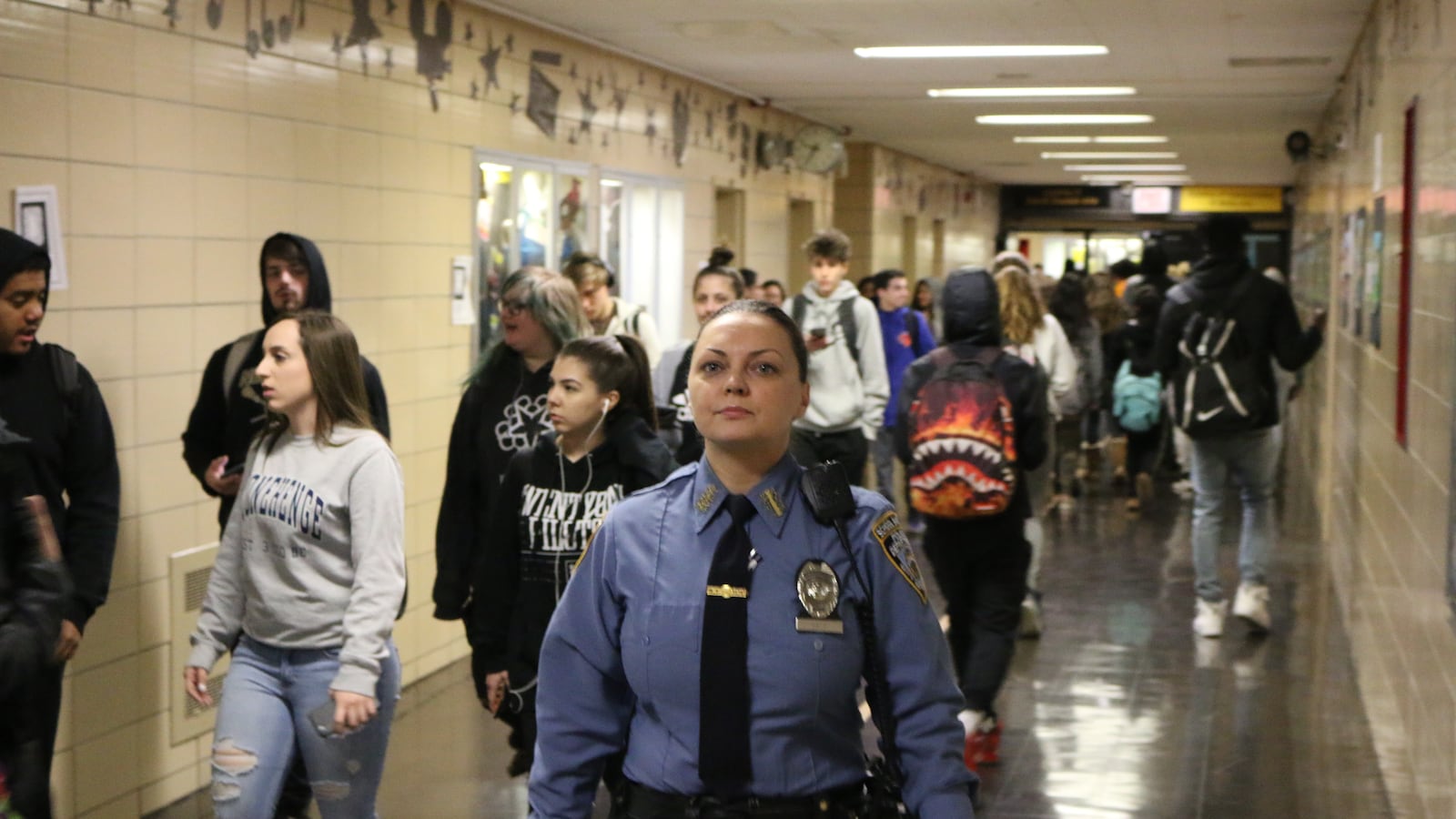Last October, city officials said they were on the cusp of announcing changes in the way the New York Police Department interacts with schools — an overhaul that began more than three years ago and sparked months of negotiations with advocacy groups.
But nearly 10 months later, the city has not announced any revisions to the “memorandum of understanding” that governs police involvement with school security, leaving in place a nearly two-decade-old agreement that has not been altered since Rudy Giuliani was mayor and “zero tolerance” discipline policies were in vogue.
Now, police and education officials say revisions won’t be made public until this fall. That timeline has infuriated advocates who said they made progress with senior city officials but have recently been kept in the dark and fear their recommendations are being ignored.
“Here we are three years later without any explanation from the administration,” said Kesi Foster, an organizer with Make the Road New York and the Urban Youth Collaborative who serves on a mayoral task force charged with revising the agreement. “It’s extremely frustrating and disheartening.”
As Mayor Bill de Blasio has worked to overhaul school discipline policies, which have reduced suspensions and student arrests, advocates say the outdated MOU has become a roadblock.
The 1998 agreement officially gives the city’s police department authority over school safety agents, a force that rivals Houston’s entire police department in size. The agreement was controversial at the time, with some city officials saying the presence of police officials made student misbehavior more likely to end in arrests.
Mark Cannizzaro, head of the city’s principals union who was a school administrator in the 1990s, said it was not unheard of for principals to consider calling the police for incidents as minor as shoving. “There was, at one point, a zero tolerance approach that didn’t make sense,” he said.
The current memorandum is a reflection of that era, advocates say, and is one of the reasons students of color are disproportionately likely to wind up in the criminal justice system instead of the principal’s office. It was supposed to be updated every four years, but has still never been revised.
De Blasio seemed to agree that the memorandum needed to be reformed, and convened a group of advocates and senior city officials who recommended changes. Among the group’s recommendations, released in 2016, were giving school leaders the lead role in addressing student misbehavior, making it more difficult for school safety agents to place students in handcuffs, and ensuring students are informed of their rights before they’re questioned.
Johanna Miller, the advocacy director of the New York Civil Liberties Union, said senior officials — including Mark Rampersant, the education department’s director of security, and Brian Conroy, the chief of the police department’s school safety division — participated in the task force and seemed receptive to changes. The group agreed there should be limits to the type of offenses that could trigger police involvement, multiple participants said, excluding offenses such as smoking cigarettes, cutting class, and certain instances of insubordination.
But when the city presented the group with a draft agreement, many of their recommendations had vanished, according to people who were present during the meetings, some of whom requested anonymity because the city required that participants sign nondisclosure agreements.
“They basically eliminated all of the major changes that we made,” Miller said, adding that the group requested another opportunity to change the agreement more than a year ago. “And that was the last we heard of it.”
City officials would not comment on why the process has been delayed or why key recommendations never made it into the draft agreement. Some task force members said they believed education and police department lawyers, who had not participated in the group’s discussions, played a role in stripping the draft agreement of the most important changes.
An education department spokeswoman acknowledged in an email that “agency lawyers have been involved in order to ensure the MOU is aligned with existing local, state, and federal laws and in the best interest of students and families,” but did not comment further on why certain changes were not included.
Asked why task force members were required to sign nondisclosure agreements, the official said the decision was made “To protect the confidentiality of any shared student data and remain within (The Family Educational Rights and Privacy Act) compliance.”
The task force still meets quarterly, although several of its members say they have not received updates and did not know the city planned to release an updated memorandum this fall.
“The DOE and NYPD have been working in close partnership to finalize updates to the MOU and ensure that the changes are done correctly in the best interest of students and families,” education department spokeswoman Miranda Barbot wrote in an email.
Cannizzaro, the principals union chief, said he has not been informed about potential changes to the agreement, adding that school leaders should have discretion in how misconduct is handled and noted the police play an important role in school safety. “We certainly appreciate their presence — we need their presence,” he said.
Some members of the task force wondered whether the selection of a new schools chief has delayed the process, and at their most recent meeting in May, schools Chancellor Richard Carranza stopped by. “He said something to the extent of, he knew it was an issue and was going to put eyes on it,” said Nancy Ginsburg, a lawyer at the Legal Aid Society and a member of the task force.
Ginsburg said she appreciates that changes take time, but also stressed that the current memorandum can make it difficult to hold officials accountable since the agreement is so vague.
“It’s impossible to hold the agencies to anything if there are no rules,” she said.

